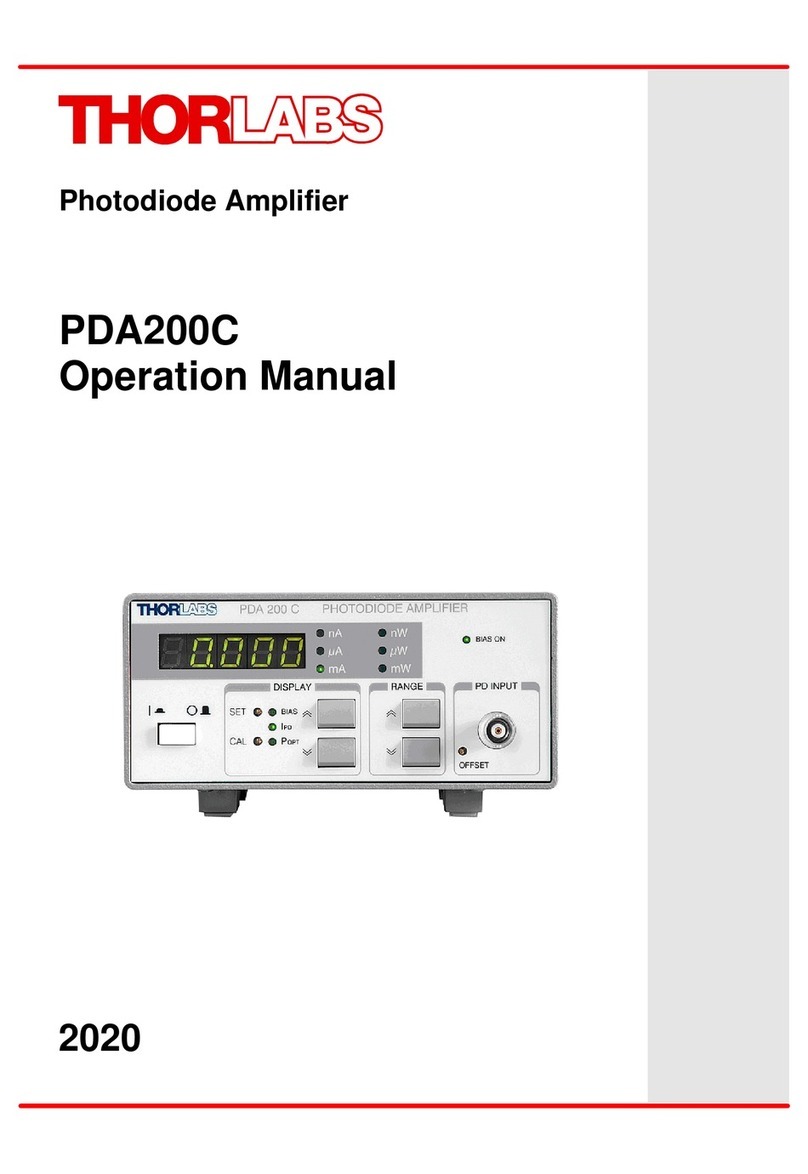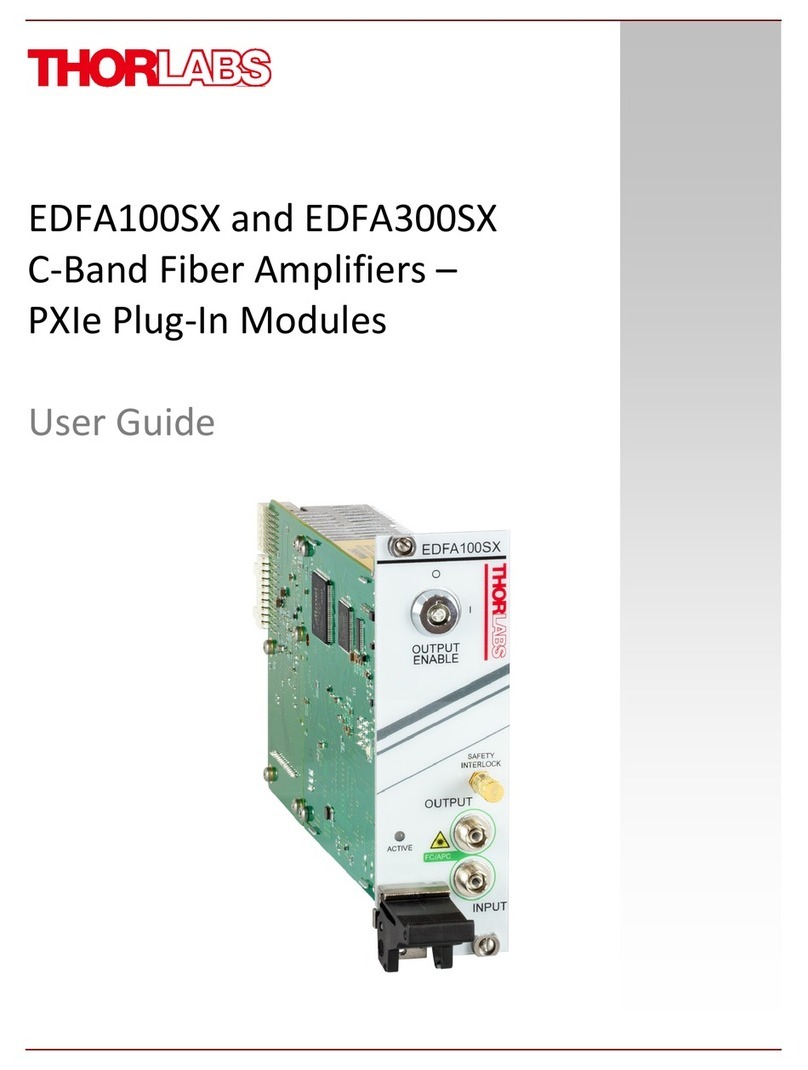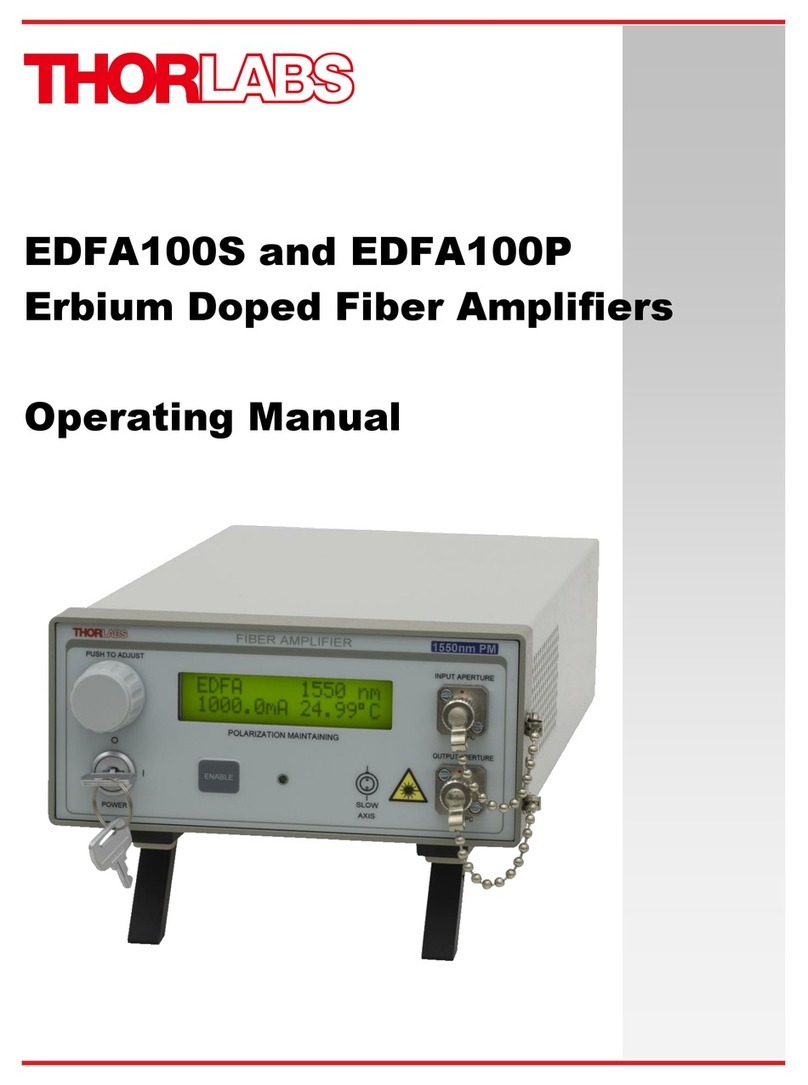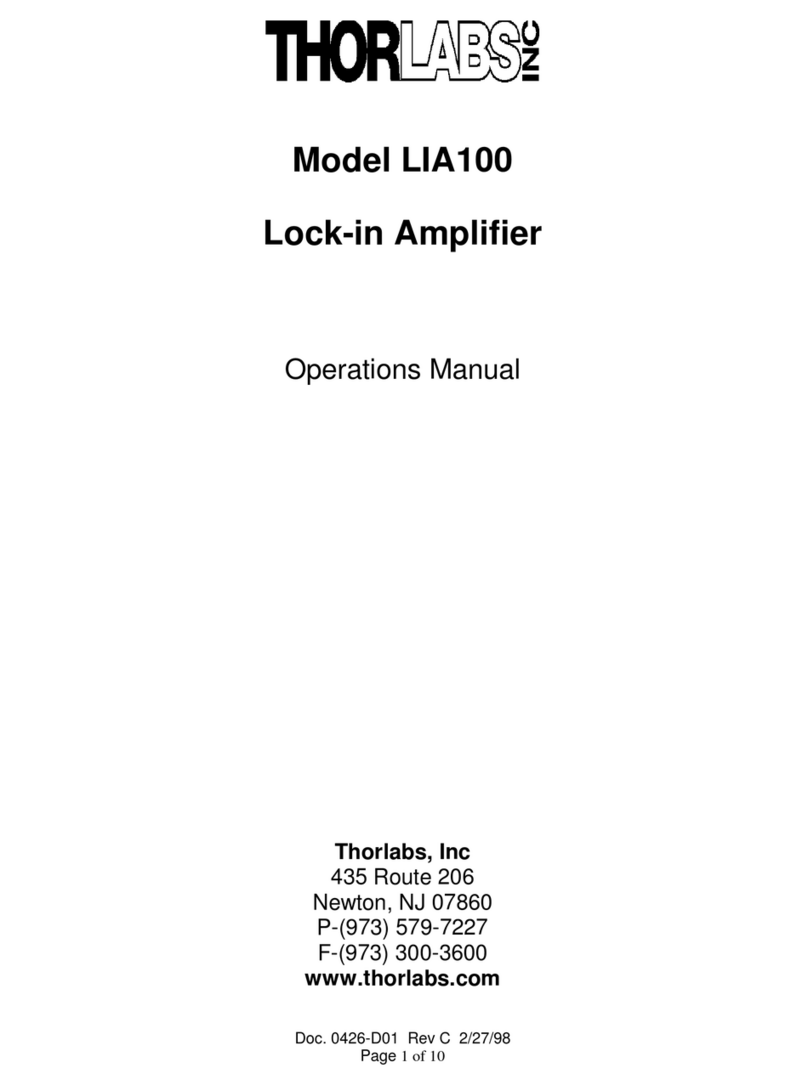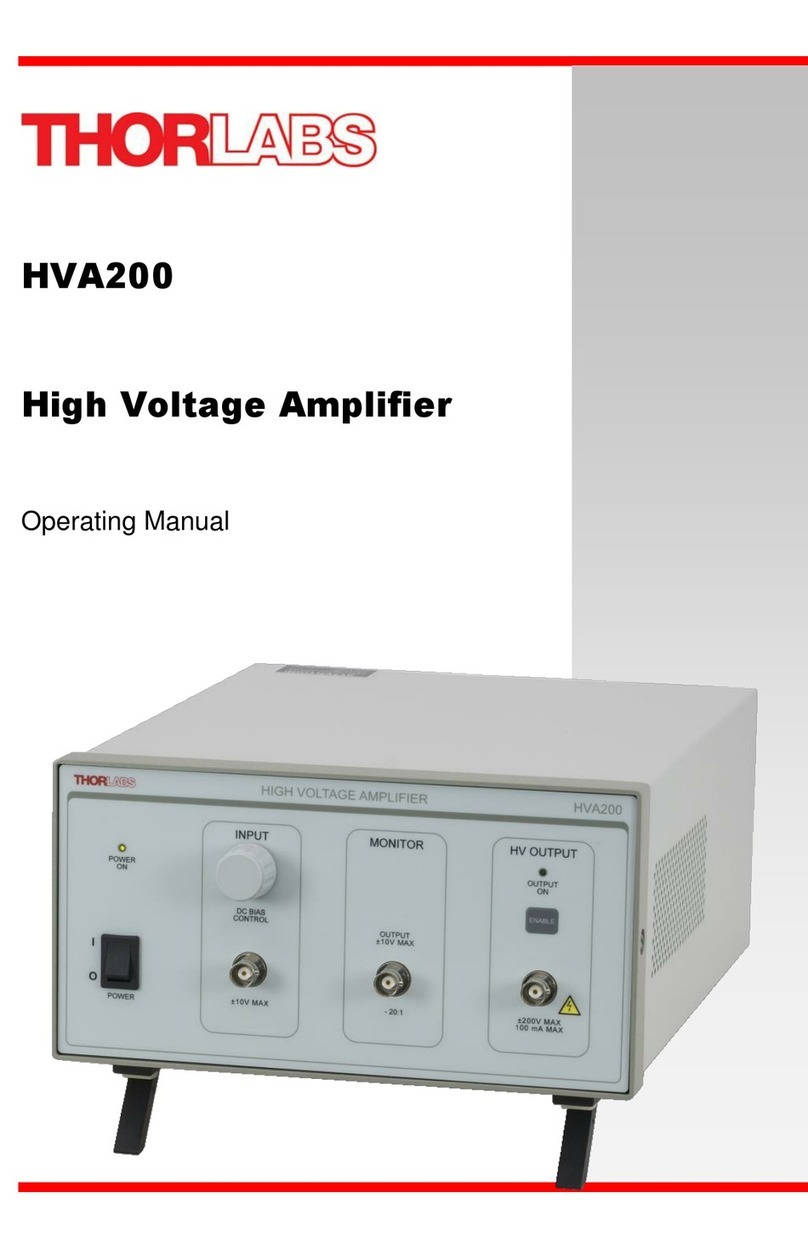
Fiber Amplifier Chapter 5: Operation from Instrument Front Panel
Rev C, March 9, 2020 Page 7
5.2. Turning On the Amplifier
1. Please consult with your organization’s laser safety officer regarding proper operation of the amplifier at
your institution.
LASER WARNING
The amplifier generates invisible amplified spontaneous emission (ASE) even without any optical
input. The power level of the ASE can be as high as 30 mW. Therefore, all laser safety measures
should be followed even if the input light to the amplifier has been disconnected or switched off.
Additionally, it should be noted that connecting a laser to the output port of the amplifier by mistake
can cause damage to the laser due to the ASE light getting coupled into the laser source.
2. Turn on the AC power switch on the back panel.
3. Press the POWER push-button switch. The display will turn on. The pump current set-point (in % of max)
will be displayed in the middle of the screen.
4. Check the temperature status on the bottom left corner of the display. It should show “OK”. If the
temperature status shows “Stabilization” for more than 30 seconds or if it shows “Error”, please turn the
unit off and contact technical support.
5. Check the emission status of the device on the bottom right corner of the screen. It should show “Off” prior
to enabling the amplifier.
6. Make sure the interlock input on the back panel is short-circuited. See Section 6 for detailed instructions.
7. Press and release the ENABLE switch to activate the fiber amplifier. There will be a 3 second delay before
the fiber amplifier powers up. During this time, the ENABLE indicator will light up and blink.
8. Adjust the pump current set-point to the desired value by pressing the adjustment knob once. The “%” sign
blinks in the adjustment mode and it times out after 5 seconds. The knob must be pressed again after the
time-out in order to make additional adjustments to the pump current set-point.
9. Ensure that the temperature status still shows “OK” after the pump current has been increased to the
desired level. The amplifier is now producing gain and is ready to use.
5.3. Adjusting the Fiber Amplifier Gain
The default operation mode of the amplifier is by controlling the pump current. This operation mode is refered to as
the automatic current control (ACC). The fiber amplifier gain and output power are controlled by varying the pump
current set-point. The system specifications represent the performance at max operating set-point (100%). Each
unit is shipped with a test data sheet that shows the amplifier output power at two different input power levels (0
dBm and -30 dBm) as a function of the pump current set-point. The data can be used as a reference to adjust the
pump current set-point for a desired gain level. In addition to the ACC mode of operation, it is possible to operate
the PDFA in automatic power control (APC) and automatic gain control (AGC) modes. These modes of operation
are only accessible through the command-line interface as explained in Chapter 6 of this manual.
5.4. Turning the Fiber Amplifier Off
Disabling the amplifier emission - The amplifier output can be turned off by pressing and releasing the
ENABLE switch. The pump diode temperature will be maintained even when the amplifier is disabled. The
temperature status should show “OK” after the amplifier has been disabled.
Power Down - When completely powering down an enabled unit, first press and release the ENABLE
switch and then press the POWER push-button switch, which will turn OFF the entire unit. Anytime the unit
is turned OFF and then turned back ON, the fiber amplifier will be disabled until the ENABLE switch is
pressed. If the amplifier is not being used for an extended period of time, it is recommended to turn off the
AC power using the switch located on the back panel of the instrument. Please note that the pump current
set-point goes back to 0% after each AC power cycle.
